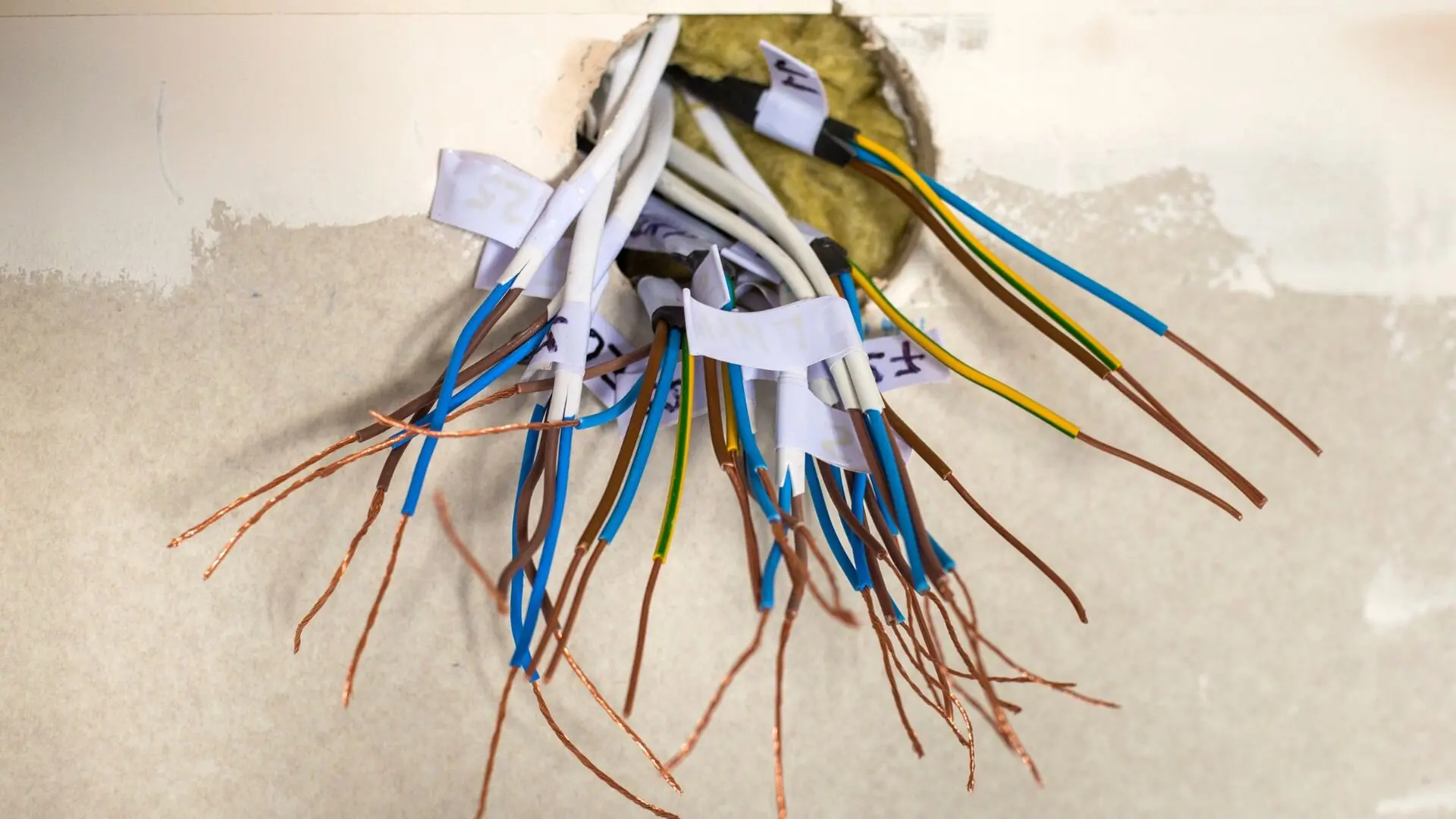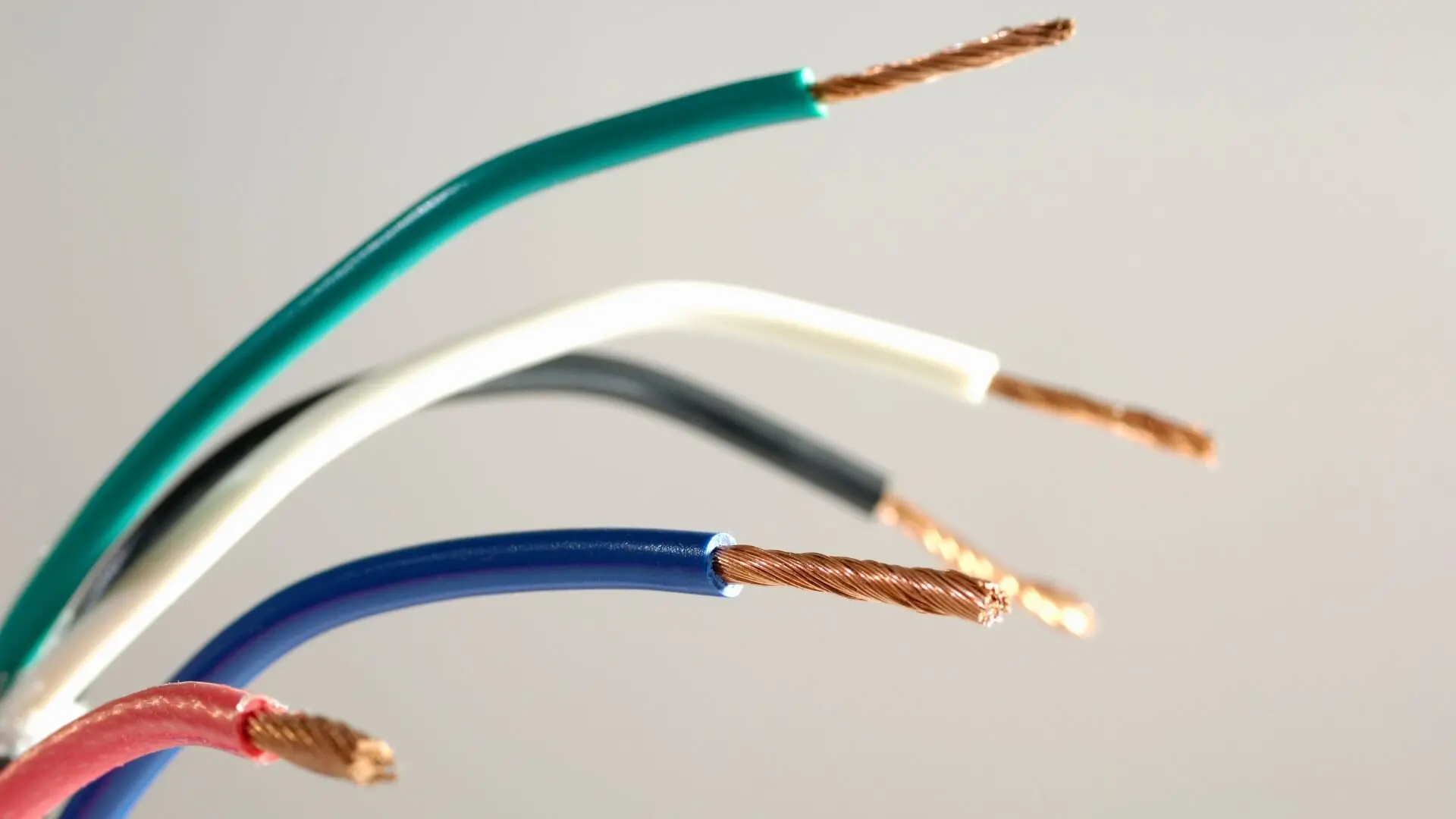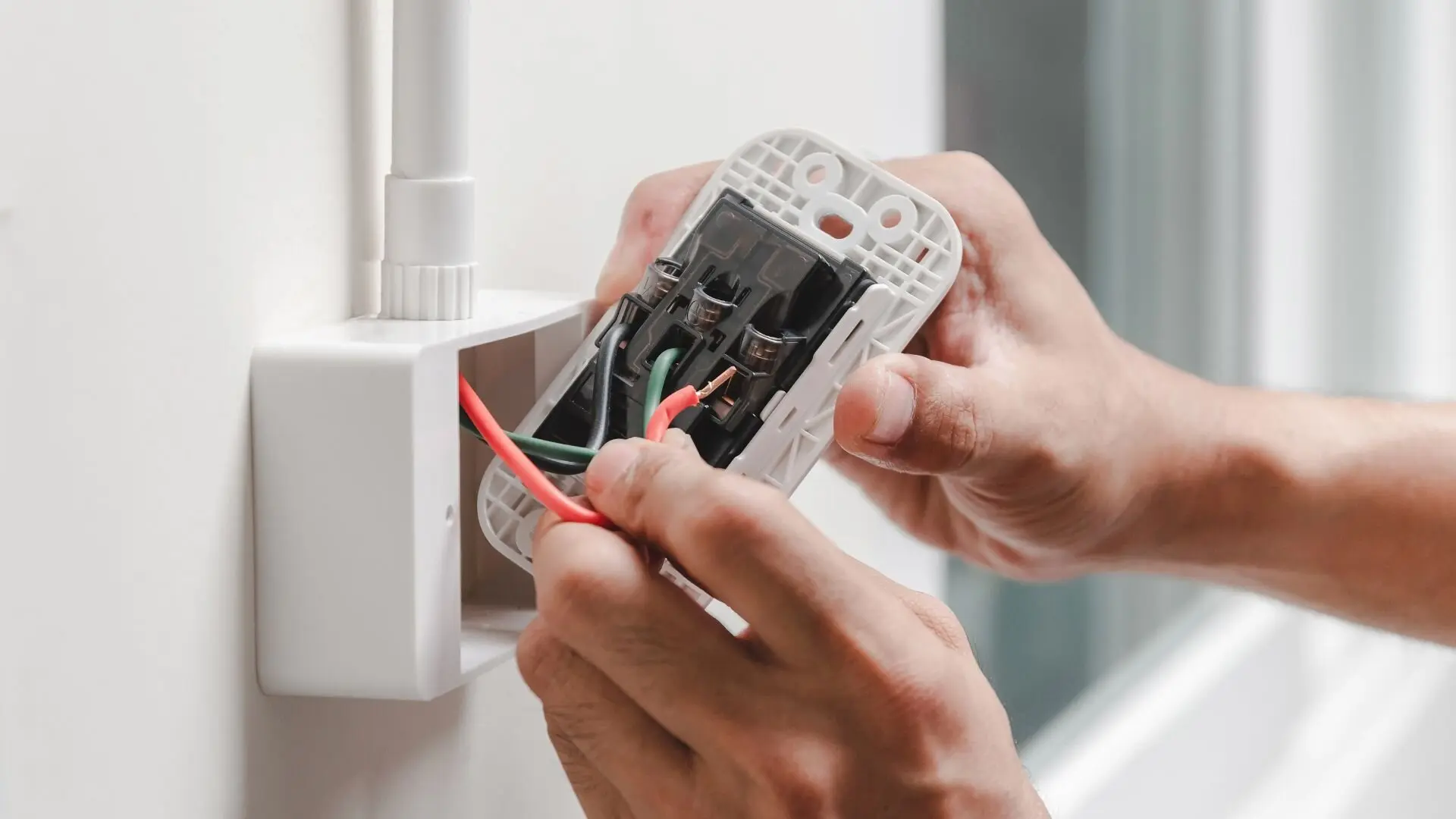In Australian home construction and maintenance, electrical wiring stands as a silent yet critical backbone to the home’s electrical system. The electrical circuits that run in the background, invisible to the eye, are a network of meticulously colour-coded wires, each following the Australian electrical wiring codes. These electrical wiring colour codes are not merely for organisation; they are a language of safety, a set of rules that guard against electrical issues and ensure the system operates as intended.
The colour coding of wires isn’t just about looks; it’s crucial for understanding how electricity flows through a home. In single-phase wiring, the active wire is usually wrapped in brown. Meanwhile, in a three-phase wiring system, you’ll find three wires, often red, white, and blue, that manage the electrical load. The blue neutral wires are there to provide a return path, while the yellow-green earth wires quietly do their job by preventing electric shock.
As a homeowner, you don’t need to master DIY electrical tasks—in fact, they’re best left to the professionals. Learn more about electrical renovation planning guide. However, it’s useful to recognise the importance of these wiring colours since they play a vital role in your home’s safety and efficiency.
Neutral and earth wires, live wires, grounding wires—each serves a specific purpose, and together, aligned with electrical wire colour codes like blue, green-yellow, and brown, they form the intricate dance of electricity that powers our lives.
This blog aims to demystify the rainbow of wires behind your walls, explaining their roles, the necessity for professional electricians, and the evolution of electrical systems to accommodate new technologies, all within the framework of the revered Australian standards.
Understanding Australian Electrical Wiring

The Australian Wiring Standards
The Australian electrical wiring codes serve as a comprehensive set of regulations that dictate how electrical circuits should be installed and maintained in buildings. These regulations are not just guidelines but are enforced by law, ensuring that every electrical installation adheres to the highest safety standards.
The Australian/New Zealand Wiring Rules (AS/NZS 3000) are the cornerstone of these standards, providing detailed instructions on electrical wire colours, electrical circuit designs, equipment selection, and installation practices. The National Electrical and Communications Association (NECA) shapes these standards. NECA’s contributions ensure that the standards evolve with technology and industry practices, maintaining safety and efficiency.
When electricians stick to these regulations, they’re safeguarding not just themselves but also homeowners from potential electrical shocks, fires, and system malfunctions. It’s all about maintaining a secure and reliable electrical environment.
Types of Wiring Commonly Used in Australian Homes

Copper Wiring
Copper’s superior conductivity and resilience make it the preferred choice for electrical wiring in Australia. It’s used in both neutral and active wires, providing a reliable and secure electrical system for the home. Using copper minimises resistance and heat build-up, which is critical for electrical safety and energy efficiency.
Aluminium Wiring
In the past, aluminium wiring was a cost-effective alternative to copper, especially noted in installations before the 1970s. However, aluminium wiring can loosen over time due to its higher resistance and expansion when heated, potentially leading to electrical fires.
Therefore, if a home has aluminium wiring, it is crucial to have a licensed electrician or electrical expert conduct a thorough inspection and possibly upgrade to current standards.
TPS (Tough Plastic Sheathed) Cable
You’ll find TPS cables all over Australian homes, known for their tough plastic covering. These cables typically contain one or more insulated wires, along with a neutral and often an earth wire. The sturdy sheathing is key to keeping the wires safe from harm or exposure.
In contrast, the earth wire adds an extra layer of safety, redirecting any electrical fault current away from the user and toward the ground wire.
Wiring Configurations
In Australia, homes are generally wired with either a single-phase or three-phase system. The single-phase system is adequate for most households, with one active, neutral wire supplying the power outlet.
The electrical service entrance brings power from the grid to the house. The equipment primarily consists of three wires: two hot wires and one neutral wire. These wires may be hung overhead (a service drop) or grounded (a service lateral). Larger homes or those with substantial power requirements might use a three-phase system with three active wires to distribute the electrical load more evenly and efficiently.
Safety Features in Australian Electrical Systems
Safety is paramount in any electrical system. Australian homes have safety switches ( Residual Current Devices or RCDs), circuit breakers, and earth wires. These components are essential in detecting and preventing electrical faults and potential electric shocks. The safety switch rapidly reduces electricity if a current leak is detected, reducing the risk of injury or fire.

Installation Practices
Electrical work in Australia is strictly regulated. Do-it-yourself (DIY) electrical work is not only discouraged but often illegal. All electrical installations or repairs should be performed by qualified electricians familiar with the AS/NZS 3000 standards. This ensures that the work is permanently connected and up to code, eliminating risks associated with improper installation.
Maintenance and Upgrading Home Wiring
It’s important to have your electrical wiring checked regularly to maintain safety and efficiency, especially in older houses. Regular inspections can catch potential issues before they become major problems.
Signs that an electrical system needs attention include frequent tripping of circuit breakers, flickering lights, or outdated wire colours that don’t match the current standards. These may indicate that the electrical wiring system requires maintenance or a complete upgrade.
Innovations in Home Wiring
With the advent of smart home technology, Australian homes are increasingly integrating advanced systems that require specialised wiring configurations and multiple active wires. In addition, the shift towards renewable energy sources, such as solar panels, necessitates the modernisation of home electrical circuits to accommodate these new technologies effectively.
Powering Australian Homes with Precision, Colour, and Care
The complexity of electrical wiring in Australian homes cannot be overstated, with wiring colour codes playing a key role in ensuring safety and compliance with the national electrical codes. Whether dealing with single-phase or three-phase wiring, the colour-coded wires facilitate proper electrical circuit management and prevent hazards.
Enersol Electrical is at the forefront of providing expert electrical services that adhere to these colour codes and Australian standards. Our team of licensed electricians is equipped to handle all your electrical needs, from routine inspections to comprehensive installations. We prioritise your safety and the efficiency of your home’s electrical system, ensuring that every wire is correctly placed and every connection securely made.
When you need dependable electrical work done right, count on Enersol Electrical. Whether your home requires upgrades or you have specific concerns, we’re here to help. We pride ourselves on bringing peace of mind with our commitment to excellence and safety in all things electrical. Contact Enersol Electrical today—where wiring meets wisdom and reliability.